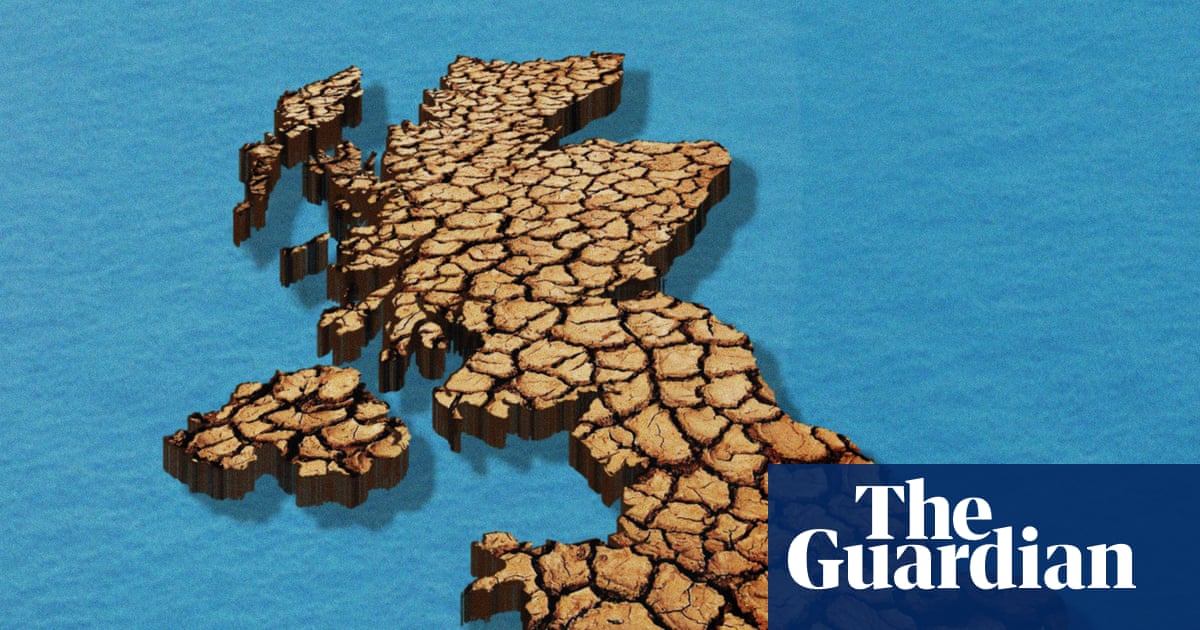How can England possibly be running out of water?While famously rainswept, climate crisis, population growth and profligacy mean the once unthin...
Published on by Water Network Research, Official research team of The Water Network

While famously rainswept, climate crisis, population growth and profligacy mean the once unthinkable could be possible
Sun 17 Aug 2025 07.00 CEST
Share
During the drought of 2022, London came perilously close to running out of water. Water companies and the government prayed desperately for rain as reservoirs ran low and the groundwater was slowly drained off.
Contingency plans were drafted to ban businesses from using water; hotel swimming pools would have been drained, ponds allowed to dry up, offices to go uncleaned. If the lack of rainfall had continued for another year, it was possible that taps could have run dry.
That, however, was just a taster of what could come down the line. On Tuesday, the government announced a “nationally significant” water shortage in England, which means the whole country is at risk of running out if the dry weather continues. People across England are already banned from using hosepipes, with more restrictions probable over coming months. The UK Centre for Ecology and Hydrology (UKCEH), an independent research institute, has warned of exceptionally low river flows. Reservoirs are also at extremely low levels and groundwater is dwindling.
A man sits on the dried grass of Greenwich Park with skyscrapers in the background
View image in fullscreen
The dried grass of Greenwich Park, London, during the drought of 2022, when contingency plans included draining hotel swimming pools. Photograph: PA Images/Alamy
Droughts are generally two-year events. A year of dry weather means water supplies are running out – that is what is happening now. Things really come to a head if the following year does not bring above average rainfall. That is when the shortages start to bite, with farmers unable to irrigate and households and businesses hit with sweeping restrictions. With reservoirs at record lows and stream flows exceptionally low, England is desperate for rain.
Forecasts indicate that by 2055 England’s public water supply could be short by 5bn litres a day without urgent action to future-proof resources, the equivalent to more than a third of the supplies available today. The effect on the economy will be profoundly negative. The thinktank Public First has estimated that the economic cost of water scarcity could be £8.5bn over this parliament.
So how on earth did famously rainswept England, notorious the world over for being green and wet with our national symbol pretty much a furled umbrella, come to this?
Britain’s geology and climate means there should be plenty of water. Underground in the south of England the rock is made of chalk, which is very soft and porous. These layers of rock filter rainwater into some of the cleanest water in the world, collecting in huge aquifers that have been tapped by local residents for centuries. Water companies now use those aquifers to provide the majority of the drinking water in some parts of the south.
A bubbling stream surrounded by trees
View image in fullscreen
Lyd Well, one of the sources of the River Thames, gushing from subterranean aquifers in the Cotswold Hills near Kemble, Gloucestershire. Photograph: Steve Taylor/Alamy
Further north, the rock underfoot is harder; sandstone and limestone, so lacking the benefits of the chalk aquifer. But it tends to receive more rainfall than the south, so there has generally been plentiful water from the skies to fill the reservoirs on which the northern water companies rely. There are also the rivers that crisscross the country, which (when clean) include gin-clear chalk streams buzzing with mayflies and thronging with salmon and other fish.
The UK is one of the rainier places in Europe. Some areas are wetter than others. In England, the Lake District generally receives an average of 2,000mm of rainfall a year, while in parts of the south-east it is as low as 700mm.
Perhaps it is because the country has always had such rich resources, that they have been taken for granted. Running out of water has never really been in question. But with population growth and climate breakdown, this is starting to look like folly.
Attached link
https://www.theguardian.com/news/ng-interactive/2025/aug/17/how-can-england-possibly-be-running-out-of-waterTaxonomy
- Water Supply
- Water Supply
- Water Governance
- Water from Air
- Water from Urine
- Domestic Water Use
- United Kingdom